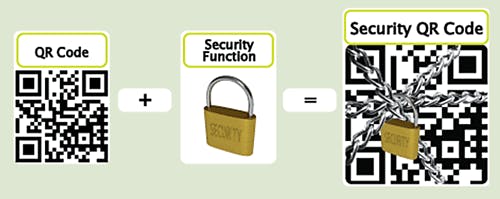Barcodes Overview
The implementation of a successful barcode system starts with the symbol. The code is selected based upon data requirements of application and the capabilities of the scanning system used.
1D Type Barcodes
Linear barcodes are uni-dimensional, i.e. the same data is present in all vertical elements. If you increase the number of characters in a linear barcode, it expands horizontally. The vertical dimension remains unchanged. Increasing the height of a linear barcode does not change its data capacity, just the ease of scanning.
| 1D Type Barcodes | GS1-128 | ITF | Code-39 | Code 128 |
| Sample Barcode |  |  |  |  |
| Character Set | All ASCII characters & control codes | Numbers | Uppercase letters, Numbers Space-.$/+% | All ASCII |
| Length | Variable | 14 or 16 | Variable | Variable |
| Application(s) | Logistics | Distribution | Logistics, Healthcare & Automotive | Retail, Healthcare & Logistics |
2D Type Barcodes
The 2-D symbologies take advantage of both horizontal and vertical encodation to reduce the symbol size and achieve character densities up to 2000 characters per square inch. There are two primary approaches taken. The first is to "stack" high-density linear symbols with very small vertical measurements. The other is to use a "pattern" code in which data can be en coded in an X-Y matrix.
| 2D Type Barcodes | Data Matrix | QR Code | RSS | PDF 417 |
| Sample Barcode |  |  |  |  |
| Features |
|
|
|
|
Comparison between 1D and 2D Barcode
| Barcode Type | 1D | 2D |
| Sample Barcode |  |  |
| Information Density | Low | High |
| Information Capacity | Small | Big |
| Omni-direction & Orientation Reading | No | Yes |
| Information Type | Numbers, English | Numbers, English, Chinese, pictures, voice and other binary information |
| Error Detection & Correction Function | No | Yes |
| Dependence on Database | Yes, Must depend on database or communication network | No, depend on database or communication network |
| Nature | Object label & index | Description on objects |
Comparison between Barcode and RFID
| Barcode | RFID (Radio-Frequency Identification) | |
 |  | |
| Read Rate | Only one at a time | 10's, 100's or 1000's simultaneously |
| Read Range | Several inches up to several feet | Passive UHF RFID: Active RFID: |
| Read Speed | Slow | Very fast (ms) |
| Readable Through Objects | No, must be line of sight | Yes |
| Identification | Most barcodes only identify the type of item (UPC Code) but not uniquely | Can uniquely identify each item/asset tagged |
| Reliability | Wrinkled or smeared labels will not be read | Nearly flawless read rate |
| Data Capacity | <20 characters with linear | 100's-1000's of characters |
| Ruggedness | No | Yes |
| Passive (automated) Data | No | Yes (via portals and smart shelves) |
| Orientation Dependence | Yes | No |
| Simultaneous Scanning of Multiple Codes/Tags | No | Yes (10-1000 tags per second) |
| Updatable | No | Yes |
Security QR Codes (SQRC)
SQRC (Security QR Code) is developed from the QR code and is meant to prevent unauthorized access to the personal and private data capture of users. With the Security QR Code, only authorized users with the correct encryption key can access the hidden data.
